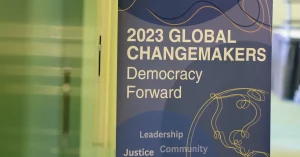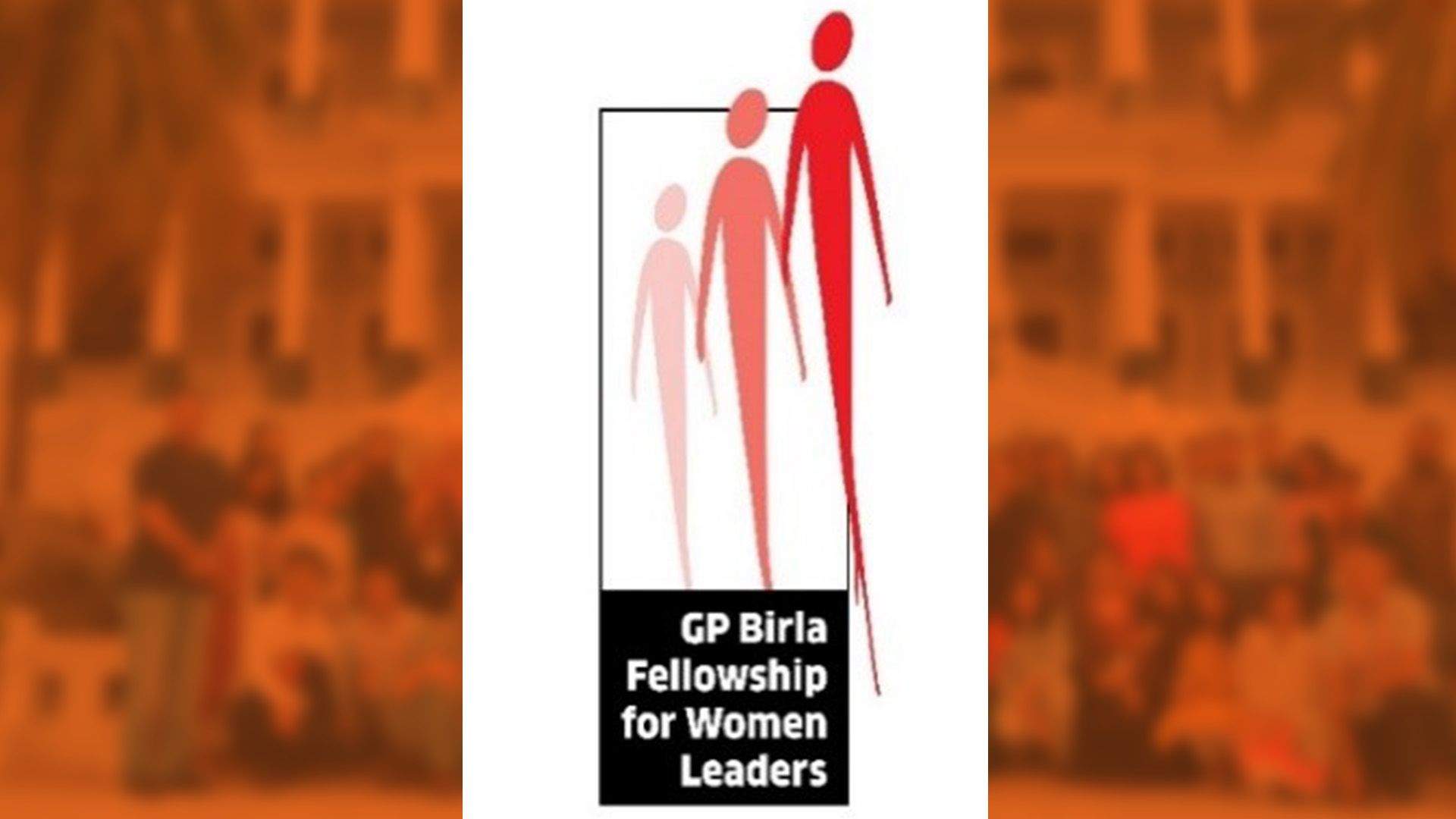HIGHLIGHTS
• Surprises galore in the fiscal mathematics of Budget 2022
• Marginal fiscal slippage
• A few imponderables
• Focus on fiscal consolidation
• No respite from debt overhang
• Higher interest burden choking expenditure
• Transparency in Budget accounting
• Growth assumptions puzzling
• Tax revenue growth underestimated
• Tax revenue next year may be a pleasant surprise
• Realism in disinvestment receipts
• Lack of clarity on privatisation
• Capex rise helped by loans to states
• Questions over revenue spend squeeze
• Subsidies cut unconvincing
• Subsidies bill settlement cleaned up
• No big boost for rural schemes
• Fillip for GatiShakti, education
• A mix of many new schemes
• Direct taxes provide stability
• Customs changes raise protection
Surprises galore in the fiscal mathematics of Budget 2022
The key fiscal numbers that Finance Minister Nirmala Sitharaman projected in her Budget for 2022-23 present many surprises. The first big surprise was the fiscal deficit for the current year.
Against the Budget Estimate of 6.8 per cent of gross domestic product (GDP), the Revised Estimate placed it at just a shade higher at 6.9 per cent. The expectation was that with the Centre’s net tax revenue seeing a sharp increase of 14 per cent over what was originally planned in the Budget Estimate, expenditure slowing down a bit and the nominal size of the economy increasing substantially over the original estimate, the fiscal deficit number for 2021-22 will be reined in at a little below 6.8 per cent.
Marginal fiscal slippage
But that has not happened. This is largely because even though receipts from disinvestment at Rs 78,000 crore will fall short of the target of Rs 1.75 lakh crore for 2021-22, the finance minister seems to have decided to ramp up government expenditure in the last two months of the current financial year. Thus, the total government expenditure in 2021-22, instead of contracting by 0.74 per cent as projected in the Budget Estimate, is expected to increase by over 7 per cent to Rs 37.7 lakh crore. Hence, a marginal slippage of 0.1 percentage point in the fiscal deficit for the current year
A few imponderables
There are three imponderables here. The government’s capacity to ramp up expenditure in the months of February and March will be tested. Total government expenditure in the first eight months of 2021-22 was about 60 per cent of the Budget Estimate in the first three quarters of the current year. The expenditure shortfall has given rise to the possibility that the entire allocations under many heads may not be fully used up by the end of March 31, giving the government a little more fiscal cushion. Two, tax revenues may be a little more than what the Revised Estimate shows, as government officials have indicated. And three, disinvestment receipts may be higher than the Revised Estimate of Rs 78,000 crore, if the public listing of Life Insurance Corporation fetches a higher price from the markets. All this could mean that the fiscal deficit in the Actuals for 2021-22, to be released later in the year, could be lower than even 6.8 per cent of GDP. Remember that the fiscal deficit as per Actuals in 2020-21 is now estimated at 9.2 per cent, down from the Revised Estimate of 9.5 per cent.
Focus on fiscal consolidation
These are minor changes. Nevertheless, they indicate the government’s undivided focus on keeping the final number on fiscal deficit as close to what it had promised and ensure that the headline number at least indicates a trajectory of fiscal consolidation. In keeping with that trend, the fiscal deficit for 2022-23 has been projected at 6.4 per cent of GDP. The finance minister also reiterated her commitment that the government’s fiscal deficit would be brought down to 4.5 per cent of GDP by 2025-26. This was in lieu of a fresh glide path for fiscal consolidation that she was expected to indicate in an amended framework under the Fiscal Responsibility and Budget Management Act. The government chose to defer this to retain the necessary fiscal flexibility to respond to the contingencies till the pandemic-induced uncertainties eased.
No respite from debt overhang
The Budget, however, provides no clear road map on how the Centre should reduce its debt over the next few years. This is an important parameter to judge the government’s approach to fiscal prudence. In sync with the reduction in the fiscal deficit in 2021-22 over that in 2020-21, the government’s market borrowing (government securities and treasury bills) also saw a 29 per cent decline from Rs 12.4 lakh crore to Rs 8.76 lakh crore in this period. But for 2022-23, the government’s market borrowing will shoot up again by 32 per cent to Rs 11.59 lakh crore. The earlier plan to use external borrowing through the inclusion of Indian securities in global bond indices seems to have been dropped at least for the coming year. This is a sensible decision as exposing the economy to external shocks during the current phase of loose fiscal policy could easily pose difficult challenges for the managing the country’s balance of payments.
Higher interest burden choking expenditure
But the increased reliance on domestic market borrowing means that the Centre’s overall debt will go up from 59.9 per cent of GDP in 2021-22 to 60.2 per cent in 2022-23. It will be an uphill task to bring the debt-to-GDP ratio down to the 40 per cent, as recommended by the Finance Commission. The government’s interest payments liability has seen an increase over the last few years at a rapid pace. As a consequence, the Centre’s. flexibility in making expenditure allocations has been further constrained. Interest payments at Rs 6.8 lakh crore accounted for about 19 per cent of the government’s total expenditure in 2020-21. This went up to about 22 per cent at over Rs 8 lakh crore. And for 2022-23, interest payments have zoomed by around 16 per cent to Rs 9.4 lakh crore and this will account for about 24 per cent of the government’s total expenditure next year. The compulsion of using up almost a fourth of its entire expenditure has severely constrained the government’s ability to spend its revenues on the schemes and projects that deserve more funding support.
Transparency in Budget accounting
The finance minister deserves full credit for having made the Budget’s fiscal deficit calculation process completely transparent. In 2021-22, Ms Sitharaman was to have reduced the government’s extra-budgetary borrowing to Rs 30,000 crore, compared to Rs 1.21 lakh crore and Rs 1.48 lakh crore in 2019-20. In the Budget that she announced on Tuesday, she has brought down that figure of extra-budgetary borrowing in 2021-22 to just about Rs 750 crore and there is none for 2022-23. This initiative is praise-worthy as it cleans the deficit accounting system in just about three years. The fiscal deficit number of 6.9 per cent for 2021-22 captures the gap between the government’s total receipts (minus borrowing) and its expenditure far more realistically than the deficit numbers of a few years ago. In short, the deficit number today does not hide the actual extent of the deficit.
Growth assumptions puzzling
The assumptions underlying the fiscal deficit target of 6.4 per cent for 2022-23 constitute another big surprise of the Budget. Nominal economic growth in 2022-23 is assumed to be at 11.1 per cent, compared to about 18 per cent recorded in 2021-22. If inflation remains elevated, which is likely because of high crude oil prices, the nominal growth rate assumption raises questions. The inflation deflator (or the rough difference between the nominal growth and the real growth of the economy) in 2021-22 was a little over 8 per cent in 2021-22. What would be the assumed inflation deflator in 2022-23? The Economic Survey has forecast the real growth of GDP next year to be at 8 to 8.5 per cent. The Budget’s nominal economic growth projection for the next year is 11.1 per cent. Is the inflation deflator for 2022-23 assumed at about 3 per cent? Can the inflation level really be expected to stay at around 3 per cent next year? Even after assuming that wholesale inflation next year will enjoy the high-base effect of 2021-22, the deceleration in the inflation rate should not be so steep. In short, the surprise in the relatively conservative estimate of the nominal economic growth for 2022-23 is a puzzle. Or is it that the Budget is indirectly hinting at a much lower real economic growth of say around 5 to 6 per cent, with the inflation deflator at 5 to 6 per cent, taking the nominal growth of the economy to over 11 per cent in 2022-23?
Tax revenue growth underestimated
Even if one assumes that it is a case of making a conservative projection for nominal economic growth, this certainly has the potential for triggering a few more surprises. The Budget has projected a gross tax revenue growth of about 10 per cent during 2022-23, based on a nominal economic growth of 11.1 per cent. This once again is a very conservative estimate. Remember that in 2021-22, the Centre’s gross tax revenues grew by 24 per cent on a rise in the nominal size of the economy by about 18 per cent. Clearly, there is a huge upside to the government’s tax revenue assumptions for next year.
Tax revenue next year may be a pleasant surprise
Corporation tax collections are set to grow by 13 per cent next year, compared to 39 per cent this year and personal income-tax collections are projected to grow by 14 per cent, compared to 26 per cent growth achieved this year. Customs revenue is projected to rise by about 13 per cent, thanks to the removal of import duty exemptions and an increase in the duty rates on select items. Significantly, excise collections, which are largely on account of the duty on petrol and diesel, are set to decline by 15 per cent next year, giving the finance ministry the flexibility to appropriately reduce the levies in case international crude oil prices skyrocket, putting pressure on the government to reduce the duty to check retail prices. GST collections too are projected to grow by 15.55 per cent, compared to 23 per cent in 2021-22. In short, the tax revenue numbers projected for 2022-23 are conservative and there will be an upside advantage.
Realism in disinvestment receipts
Even the non-debt capital receipts budgeted from disinvestment shows that the government has at last given up its obsession with fixing overtly ambitious targets. Against a target of Ra 1.75 lakh crore in 2021-22, the Revised Estimate places it at Rs 78,000 crore. This is yet another sign of conservative budgeting. The public listing of the Life Insurance Corporation was expected to have fetched Rs 1 lakh crore. It now appears that in recognition of the volatility in the stock market, the government may complete the initial public offering in two phases. Thus, the disinvestment receipts in 2021-22 have been scaled down and the target for 2022-23 is also set at a lower level of Rs 65,000 crore. This is a welcome sign of the government moving away from the practice of over-relying on disinvestment to plug its deficit.
Lack of clarity on privatisation
But this could also be a political signal from the government to go slow on privatisation. Note that in her Budget speech the finance minister shied away from using the word privatisation. She would go only as far as describing them as a “strategic transfer of ownership” or the selection of a “strategic partner”. The word privatisation was shunned this year, in contrast to the last Budget.There is also no mention of what the government intends to do on privatisation of banks and insurance firms. No indication of when the proposed bank privatisation laws would be introduced in Parliament. In her last Budget, presented on February 1, 2021, she had announced that “other than IDBI Bank, we propose to take up the privatisation of two public sector banks and one general insurance company in the year 2021-22.” The amendment to the insurance law has been passed to bring down the government’s stake in insurance companies to below 51 per cent, but no action plan has been indicated so far.
Capex rise helped by loans to states
The Budget for 2022-23 has reserved bigger surprises on the expenditure side. The government’s capital expenditure has been given a big push for yet another year. In 2021-22, if the government meets the Budget Estimate, the total capital expenditure of Rs 6.03 lakh crore (including about Rs 52,000 crore of capital infusion into Air India before it was being sold to the Tata Group) would represent a whopping 41 per cent increase over 2020-21. And now for 2022-23, the capital expenditure would go up by another 24 per cent. Of course, the increased capex of Rs 7.5 lakh crore includes a component of Rs 1 lakh crore, which the Centre would make available to the states by way of 50-year interest-free loans to help them finance their capital projects, subject to fulfilling specified conditions. But there is no denying that the sharp increase in the government’s capital expenditure next year, which hopefully would crowd in private sector investment that at present is not picking up with its capacity utilization level still hovering at around 70 per cent.
Questions over revenue spend squeeze
The surprise on account of the Budget’s assumptions for the government’s revenue expenditure, however, is troubling. On the face of it, the government seems to have taken credit for having squeezed its revenue expenditure. An increase of just 0.86 per cent in revenue expenditure in 2022-23 over 2021-22 (remember that the government’s revenue expenditure has gone up by 8 per cent in the current year) appears to be too ambitious to be achieved. A breakdown of the revenue expenditure projected for 2022-23 is revealing as it would explain why the move could be problematic.
Subsidies cut unconvincing
For instance, major subsidies (food, fertiliser and petroleum) are expected to decline by over 26 per cent. Admittedly, the plan to slash subsidies next year is less ambitious than what the government intended to achieve on this front last year. Budget 2021 had proposed to reduce major subsidies by 52 per cent in 2021-22, but eventually had to concede a 28 per cent increase over the Budget Estimate and should end the 2021-22 year at Rs 4.33 lakh crore. It is likely that next year also the government’s major subsidies bill will have to be revised upwards. The 25 per cent reduction in the food subsidy bill is possible only if the Pradhan Mantri Garib Kalyan Anna Yojana (the free food scheme extended till March 31, 2022 in view of Covid-19) is not extended into next year and the existing public distribution system for food is streamlined to gain efficiency. A decline in the fertiliser subsidy bill of 28 per cent will be a challenge as fertiliser prices are on the rise, thanks to hardening crude oil prices. Raising fertiliser prices could cause further stress among farmers and may not be possible, rendering the target of a reduced fertiliser subsidy almost unachievable. The 11 per cent fall in petroleum subsidies to be achieved in 2022-23 may once again be difficult to achieve if international crude oil prices stay on their northward trajectory. It is possible that like in 2021-22, the subsidies bill will also see an increase over what has been presented in the Budget Estimate.
Subsidies bill settlement cleaned up
The handling of the major subsidies bill is a surprise also because in the recent past the government had become more disciplined as far as accounting under this head was concerned. In 2020-21, the government had cleaned up a lot of its past dues on subsidies and had become more transparent about showing the actual impact of higher subsidies on the government account. The major subsidies bill in 2020-21 had more than trebled to Rs 7.07 lakh crore, compared to Rs 2.28 lakh crore in 2019-20. Unfortunately, the developments in 2021-22 show a trend towards under-provisioning at the start of the year, resulting in a huge added expenditure burden by the year ends. A similar trend is expected in 2022-23.
No big boost for rural schemes
A quick look at the key items of expenditure shows how the government has been tight-fisted about many of its pet schemes. The allocation for the PM Kisan Samman Nidhi, under which Rs 6000 is paid to all land-holding farming families during a year, has been kept at Rs 68,000 crore, compared to Rs 67,500 crore to be spent in 2021-22. The Mahatma Gandhi National Rural Employment Guarantee Programme has seen a 25 per cent reduction in its allocations at Rs 73,000 crore for 2022-23, compared to Rs 98,000 crore in 2021-22, perhaps in the belief that the demand for work under this scheme would decline as the economy emerges out of Covid-induced economic uncertainties. But this belief is contrary to its assumptions of continued Covid-induced stress in the economy, which led the government to stay away from framing any fiscal consolidation glide path under the Fiscal Responsibility and Budget Management Act.
Fillip for GatiShakti, education
Apart from the huge increase in the government’s capital expenditure, the government has proposed an 18 per cent increase for its education spend to about Rs 1 lakh crore, which will see higher allocations for the National Education Mission and the launch of a digital university. A big push in the Budget was for the Prime Minister Gati Shakti programme, which is a master plan for multi-modal infrastructure development plan and which will be aligned with the National Infrastructure Pipeline.
A mix of many new schemes
Other key announcements in the Budget include the launch of a digital currency by the Reserve Bank of India, promotion of chemicals-free natural farming in the country starting with farmers’ lands in five-kilometre wide corridors along the Ganges, construction of 25,000 kilometres of highways in 2022-23 translating into a daily task of completing 68 kilometres of road building, a package for the Micro Small and Medium Enterprises (MSME) sector including the extension of the Emergency Credit Line Guarantee Scheme for another year till March 2023, the launch of five more river-linking project in addition to completing the existing Ken-Betwa linking project, the linkage of 1.6 lakh post offices in the country to the national Core Banking Solutions of the financial sector, the launch of e-passports, the extension of the production-linked incentive scheme to the photo voltaic module sector, the launch of an inter-operable battery system for the electrical vehicles and a battery swapping policy, the completion of 5-G spectrum auctions by March 2023, earmarking procurement of at least 68 per cent of the total defence projects through domestic companies (up from the current level of 58 per cent), the launch of a sovereign green bond to mobilise resources for environment-friendly infrastructure and to reduce the carbon intensity of such projects, setting up foreign universities, institutions and an international arbitration centre in the Gandhinagar-based GIFT international financial services centre and conferring infrastructure status on data centres.
Direct taxes provide stability
The Budget for 2022-23 was relatively light on new taxation proposals. This was welcome to the extent that it lent stability to the taxation system. However, the absence of schemes to widen the tax base could be problematic. The share of gross tax collections in GDP will actually move down marginally from 10.8 per cent in 2021-22 to 10.7 per cent, compared to over 11 per cent till about 2018-19. Among the few changes in the tax rates, what stand out are the following: A reduction in the tax incidence for cooperatives, a cap of surcharges on long-term capital gains to 15 per cent and a 30 per cent tax on income from transfer of cryptocurrencies along with a 1 per cent tax deduction at source on such transfers of virtual digital assets and a more friendly Customs regime with easier procedures for units operating in the Special Economic Zones.
Customs changes raise protection
A major part of the taxation initiatives in the Budget pertained to the levy of Customs duty. Customs revenue, which had seen a declining trend till 2019-20, when annual collections were down to about Rs 1.09 lakh crore, have maintained their uptrend every year since 202-2021, thanks to a conscious policy decision to remove Customs exemptions on many items and raise the rates on many others. The Budget for 2022-23 continued that trend. Another 350 tariff exemption entries are to be phased out, which in effect would raise their import duties. In addition, Customs duty concessions for the capital goods sector and project imports, barring a few advanced machinery items, are being removed and a duty of 7.5 per cent is being levied. The finance minister’s statement explaining the rationale indicates the new policy mindset. “Our experience suggests that reasonable tariffs are conducive to the growth of domestic industry and ‘Makr in India’ without significantly impacting the cost of essential imports”, Ms Sitharaman said.
The previous issues of Indian Economy Review are available here: LINK
Supported by
………………………………………………………………………………………………
(The views expressed are personal)
………………………………………………………………………………………………

























